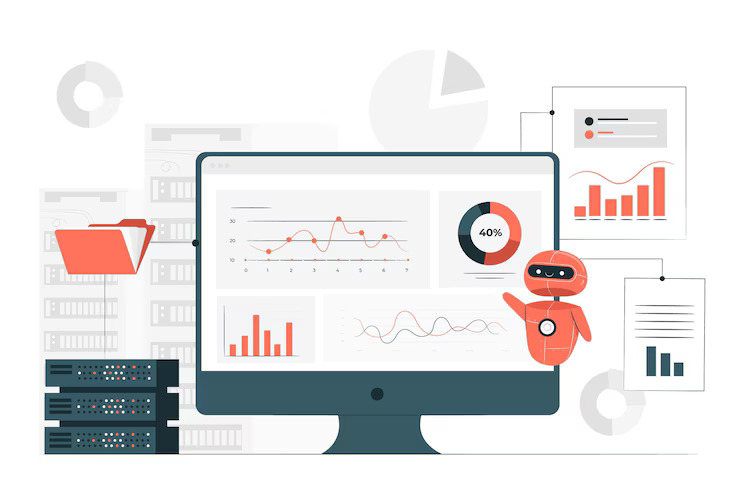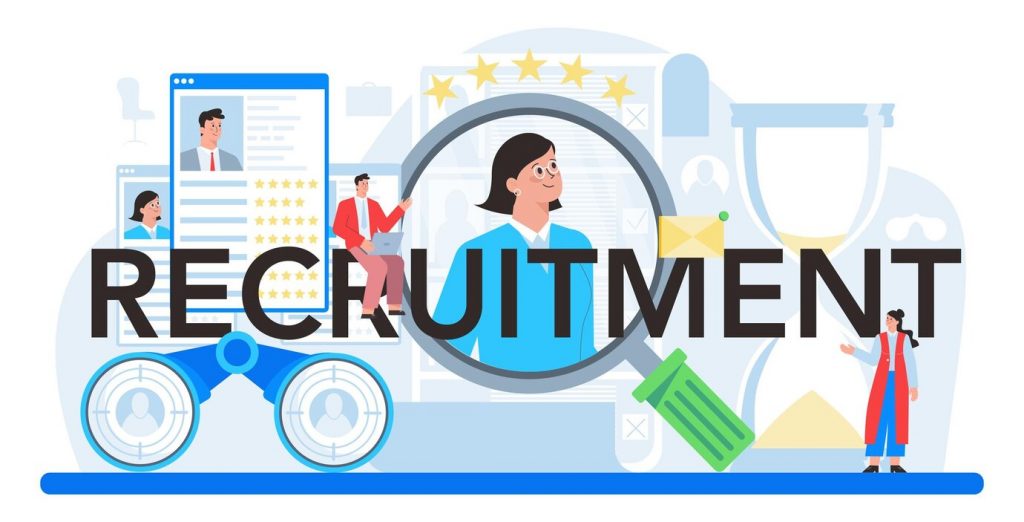Introduction:
The hiring playbook has changed. Where intuition and gut-feel once ruled, data and algorithms now lead. Artificial Intelligence (AI) has moved from buzzword to backbone in recruitment, helping companies identify top talent faster and more accurately than ever before. In particular, predictive analytics—the use of historical and real-time data to forecast hiring outcomes—is transforming how organizations build winning teams.
In a 2024 Deloitte report, 72% of talent acquisition leaders cited predictive analytics as a key strategic priority for the next 24 months. This shift isn’t just about efficiency; it’s about gaining a competitive edge. Predictive hiring enables smarter decisions, better cultural fits, and ultimately, stronger business outcomes.
JobTwine leverages this momentum by integrating predictive analytics into every layer of the hiring funnel—from candidate sourcing to post-hire retention models. In this post, we explore how AI and predictive models are redefining recruitment, backed by data, real-world case studies, and actionable insights.
What Is AI in Hiring?
AI in hiring refers to the application of artificial intelligence technologies to automate, optimize, and improve recruitment processes. This includes natural language processing (NLP), machine learning (ML), and data modeling to screen resumes, assess candidates, and predict job performance.
Traditional hiring often relies on subjective judgment, inconsistent screening, and manual evaluation. In contrast, AI-powered hiring introduces objectivity, scalability, and predictive intelligence into every step. According to LinkedIn’s Global Talent Trends 2023, 76% of recruiters believe AI will significantly impact how they hire.
Common applications include:
- Resume parsing and ranking using NLP
- Chatbots for initial candidate screening
- Predictive scoring models for job performance
- Video interview analysis to assess tone, sentiment, and engagement
JobTwine’s AI engine, for instance, evaluates not just experience but also communication style, cultural alignment, and growth potential.
Also Read: Top AI Interview Platforms in 2025: Features & Comparison
Understanding Predictive Analytics in Recruitment
Predictive analytics in recruitment involves using statistical algorithms and machine learning techniques to analyze past hiring data and forecast future outcomes. It answers key questions such as:
- Who is likely to succeed in this role?
- Which candidate fits our culture best?
- How long will a hire likely stay?
A classic use case is predicting attrition risk: By analyzing tenure data, skillset alignment, and engagement metrics, companies can flag candidates more likely to churn within the first year.
Case in Point: IBM uses predictive analytics to assess employee flight risk with 95% accuracy. This has saved them over $300 million annually in retention costs (IBM HR Analytics, 2023).
JobTwine applies similar models to help companies identify high-retention candidates during the interview process, reducing costly mis-hires and optimizing team stability.
Also Read: Top LinkedIn Candidate Sourcing Strategies for Hiring Success
Benefits of Using Predictive Hiring Tools
1. Improved Candidate Quality
AI tools surface candidates who are not just qualified but who also fit performance and culture profiles derived from historical data. According to Ideal, companies using predictive hiring tools report a 20% increase in quality-of-hire metrics.
2. Reduced Time-to-Hire
Predictive analytics accelerates the hiring process by eliminating manual screening. The Society for Human Resource Management (SHRM) found that AI tools can cut time-to-hire by up to 40%.
3. Lower Cost-per-Hire
Reducing hiring cycle length, improving screening efficiency, and minimizing bad hires directly impacts cost. Companies report saving $3,000 to $5,000 per hire using predictive tools.
4. Better Decision-Making with Data
Hiring managers can make objective decisions based on predictive scoring, reducing unconscious bias. Tools like JobTwine’s Talent Fit Score offer data-backed recommendations that align with long-term business goals.
Also Read: Interview Simulation: How Practice can Improve Your Job Success
Top AI Recruitment Software & Tools in 2025
The AI hiring software landscape has matured rapidly. Here are some standout platforms that integrate predictive analytics:
- JobTwine – Advanced AI interview insights, predictive scoring, and simulation-driven hiring analytics.
- HireVue – AI video assessments and predictive performance analytics.
- Pymetrics – Behavioral science-powered predictive hiring models.
- Eightfold.ai – Talent intelligence platform using deep learning for role matching.
- Entelo – Predictive analytics for diversity hiring and candidate sourcing.
When evaluating recruitment analytics software, prioritize:
- Model transparency and explainability
- Integration with ATS and HRIS platforms
- Compliance with data privacy laws (GDPR, EEOC)
- Real-time candidate scoring
Also Read: Fostering Diversity Through AI-Powered Interview Intelligence
How Companies Use Predictive Hiring Models
1. Talent Sourcing with AI Algorithms
AI sourcing tools analyze web data, social profiles, and resume databases to find high-fit candidates, even before they apply. For instance, Unilever uses AI to identify passive candidates and increased sourcing efficiency by 32%.
2. Resume Screening Automation
Predictive models rank resumes based on skills, job match, and career trajectory. Google applies ML screening models that saved over 1,000 recruiter hours annually.
3. Cultural Fit and Performance Prediction
JobTwine uses proprietary cultural fit analytics to assess whether a candidate’s values align with organizational norms, boosting post-hire engagement.
Predictive Analytics for HR Strategy
Predictive analytics extends beyond hiring into strategic workforce planning.
Aligning HR Goals with Predictive Data
Forecast hiring needs based on business growth, market shifts, and skills demand. Adobe uses predictive hiring models to align HR with quarterly business goals.
Building Long-Term Talent Pipelines
Analytics help identify skill gaps early. For instance, Microsoft maps predictive models to track which roles are likely to face shortages and proactively trains internal talent.
Improving Employee Retention
Data models flag flight risks based on behavior, engagement, and external indicators. According to Workday, this has helped organizations reduce attrition by over 25%.
Also Read: Interview Intelligence vs. Traditional Hiring: Which Approach is Right for You?
Key Challenges and Ethical Considerations
Despite its promise, AI hiring poses challenges that demand scrutiny.
Bias in Algorithms
Historical data can reinforce past biases. Amazon famously scrapped its AI recruiting tool after it showed bias against women in tech roles. Mitigation strategies include:
- Auditing datasets for fairness
- Using de-biasing techniques in models
- Incorporating human-in-the-loop review
Data Privacy and Compliance
GDPR, CCPA, and EEOC regulations must guide every stage of AI development. Transparency in how decisions are made is critical.
Human Touch Still Matters
AI assists, but doesn’t replace, human intuition. The best results come from blended approaches that combine algorithmic precision with empathetic interviews.
Also Read: Key Interview Intelligence Trends to Look Out for in 2025
Future of AI in Hiring
The next wave of AI in hiring is both promising and disruptive.
- Emotion AI & Sentiment Analysis: Real-time emotion detection during interviews will become commonplace.
- DEI-Driven Models: Predictive hiring will be used to measure and optimize diversity, equity, and inclusion metrics.
- Hyper-Personalized Candidate Journeys: AI will customize every touchpoint based on predictive behavioral patterns.
According to Gartner, by 2027, 80% of HR leaders will rely on AI-driven platforms to make final hiring decisions.
JobTwine is already working on next-gen features like simulation-based evaluations, predictive onboarding success scores, and bias-resistant scoring frameworks.
Also Read: What is an Interview Intelligence Platform? A Guide for Modern Recruiters
Conclusion: Predictive Hiring is No Longer Optional
AI in hiring isn’t a futuristic concept—it’s a present-day competitive advantage. Companies that embed predictive analytics into their recruitment workflows see better hires, lower churn, and stronger teams.
Platforms like JobTwine are leading this evolution, offering end-to-end AI solutions that enable data-driven hiring with a human edge. The future of hiring belongs to those who can predict it—and act on it.
Adopt AI. Embrace Predictive Analytics. Hire Smarter.
Frequently Asked Questions:
1. What is predictive analytics in recruitment?
Predictive analytics uses data models to forecast outcomes like job performance, culture fit, and retention probability.
2. Is AI hiring software biased?
It can be, if trained on biased data. Ethical AI hiring tools use debiasing techniques and human oversight to mitigate this.
3. Can predictive hiring models improve retention?
Yes. By identifying high-risk hires early, companies reduce turnover and enhance long-term performance.
4. Are predictive hiring tools suitable for small businesses?
Absolutely. Tools like JobTwine are scalable and offer predictive insights even for lean HR teams.
5. How do I get started with predictive hiring?
Start by integrating an AI-powered platform like JobTwine into your existing hiring stack and focus on a single use case, like resume screening or cultural fit analysis.In




